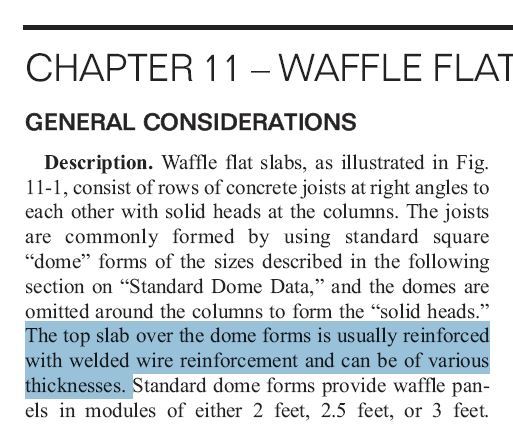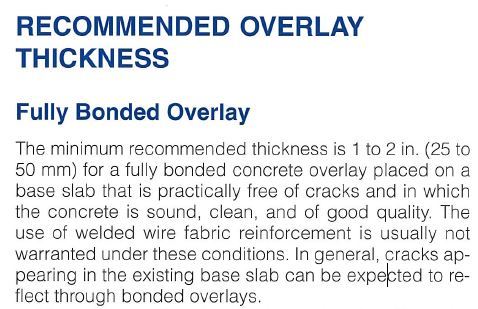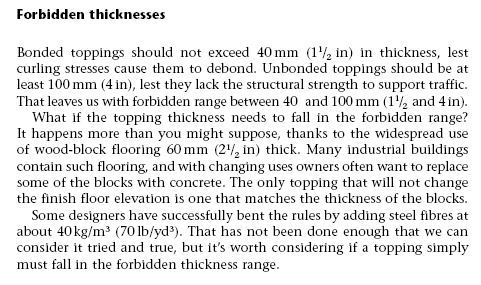ajk1 said:
Can you tell me from which edition (year of publication) that CRSI excerpt is?
10th edition, 2008.
ajk1 said:
Regarding point #2, I had similar thought about the mesh introducing a discontinuity that would perhaps not be good for the bond of the new topping to the old substrate. Note though we are using a proprietary bonding agent that has produced very good bond strength results (>1.5 MPa) in the past, albeit without the mesh present.
ajk1 said:
Regarding the bond of the concrete to the mesh, would you not expect that there is enough of the perimeter of the mesh that will be bonded to the new concrete that the mesh could still be developed, and also that if the topping is bonded to the substrate that the mesh would be clamped together and that would also contribute to developing the mesh?
I stand by both of my original points but consider them to be relatively inconsequential. As I mentioned, I've 50 mm topped plenty of precast with the mesh probably at the bottom of the topping. And, to my knowledge, nothing has gone awry.
ajk1 said:
a)Must rely solely on unreinforced slab to take the stresses from wheels on the 2.5" slab, which is not permitted by Code for suspended members. I don't think that we can rely on arching action (20" span / 2.5" slab = 8), can we?
If you need the reinforcing for flexural strength that is, of course, another matter. However:
1) I wouldn't expect the WWM to be very effective installed above the centroid of the slab.
2) After the topping is installed will your slab depth not be 2.5" + 2" = 4.5"? Span/depth = 4.4? If so, that's suitable arching territory.
ajk1 said:
b)There is nothing to restrain the existing substrate cracks telegraphing thru the new topping (which I am sure they will do, as they will move when vehicle wheels pass over them). ...It may be that the mesh will not help much in this regard, but is may help a little.
In my opinion, with the mesh installed at the bottom of the topping, you're going to get telegraph cracks either way. If you feel that the mesh improves mattesr, go with your gut and Hokie's recommendation, and have it installed.
ajk said:
c) We will be in violation of criteria published by a recognized authority (CRSI). Another engineer can then come along and say we did not conform to recognized practice.
The mesh provides a definite crack control benefit in a new install that is non-existant/debatable in your scenario. It's apples and oranges.
For me, it would come down to this:
1) I don't feel that the mesh would provide meaningful flexural capacity improvement when installed at the bottom of the topping.
2) I don't feel that the mesh would provide meaningful crack control when installed at the bottom of the topping.
3) I think that the prime concern here is preventing future corrosion problems. Given that you're likely to get telegraph cracks and the like, I worry that moisture may find its way into those cracks and corrode the mesh. That corrosion might generate expansive rust and
that might produce a delamination and a frustrated client. Use galvanized mesh of course.
I like to debate structural engineering theory -- a lot. If I challenge you on something, know that I'm doing so because I respect your opinion enough to either change it or adopt it.




